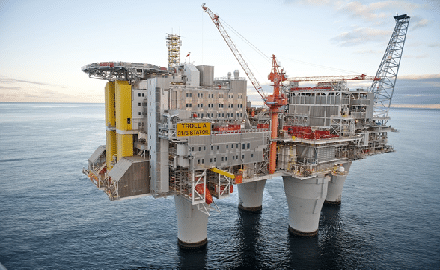Statoil has completed its investigation into the leak that occurred on the Gudrun platform in the North Sea in February, stating that it could have been ‘fatal’.
Statoil’s corporate investigation team, which has been investigating the leak incident, concluded that if anybody had been exposed to the leak it would have turned out to be a deadly one.
The condensate leak occurred on 18 February, reporting noise and vibrations on the platform and hydrocarbons were then confirmed in the process module.
According to the company, across the circumference of a 2in pipeline a 2mm wide crack extended by 90%, resulting in the leakage of condensate and gas distribution.
The company calculated the actual leak rate to be around 8kilogram/second and its condensate volume to 4m³.
Statoil Development and Production Norway safety and sustainability senior vice-president Øystein Arvid HÃ¥land said: “The condensate leak on Gudrun was serious with major incident potential.
“Statoil is working systematically on gas leak prevention, and the learnings from this incident shall be translated into specific actions. We must ensure that these efforts help prevent future incidents.”
Material technical investigations found that the wide crack occurred due to fatigue and overload, and the vibrations in the valve and surrounding piping system were due to an under-dimensioned level valve during routine plant operation.
Vibrations resulted in loss of level valve control that led to repeating powerful vibrations and strokes in the piping system.
Statoil south cluster of Development and Production Norway senior vice-president of the operations Bente Aleksandersen said: “The investigation gives us valuable information to learn from and it is our responsibility to use this information both in Statoil and towards the Petroleum Safety Authority Norway (PSAN) and other players in the industry to prevent a recurrence of this type of incident.”


















































